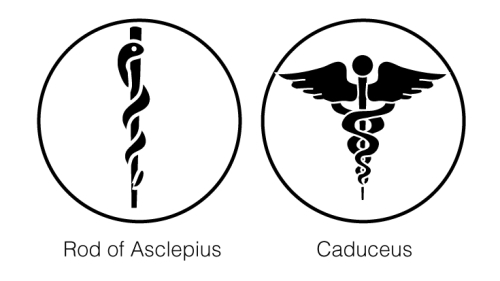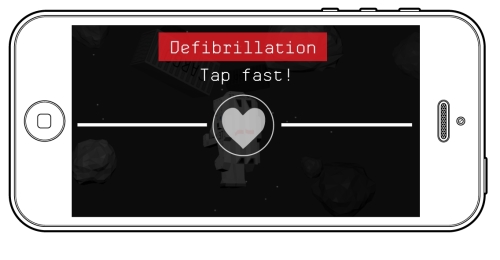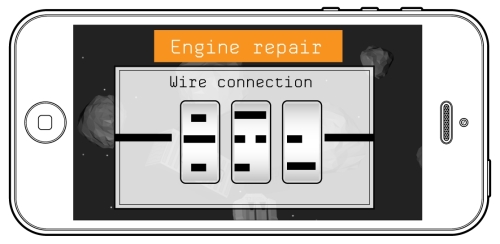The protagonist has two vital variables: health and oxygen. They are tightly interconnected. The astronaut needs air to breathe. One of the essential ingredients in the air is oxygen. It is also used to supply the level of health if the astronaut is wounded. In this case, he consumes the oxygen much faster (to refill the health bar, it may take more than half of the oxygen tank) since there are no medicine chests in the game, only oxygen canisters.
You might notice that most modern games do not feature an image of a red cross on any medical supply recourses. Usually, it is replaced with a stylized emblem that is close to the cross, but has other visual properties. This is because the red cross symbol belongs to International Red Cross and Red Crescent Movement. Because it has a specific and significant meaning, any misuse is forbidden by the law. This protects the emblem from contamination by unnecessary connotations and inflation of correct sense. Thus, other medical symbols should be used in games, and they need not resemble the red cross.
For instance, the Rod of Asclepius, which was taken from Greek mythology, looks like a stick entwined by a serpent. Asclepius was honored as the God of medicine and healing while the serpent itself symbolizes drugs (http://en.wikipedia.org/wiki/Rod_of_Asclepius).

By now, the Rod of Asclepius is pretty popular. It is used by many medical facilities and organizations (for example, it is a part of the logo of the World Health Organization). Many ambulances in the United States and Europe have this logo. The symbol is written into the Star of Life, which is the emblem of emergency medical services (EMS).
The Caduceus is another well-known symbol of medicine, especially in the U.S. You may find it in many games, printed on medical chests and other types of medical stuff. The most interesting point is that originally, it was associated only with commerce because it was carried by Hermes, the ancient Greek god of trade. From the mythological point of view, the emblem is not correct. The Caduceus has two serpents, but they are not exactly medicine ones. Apparently, the symbol was involved in a new semantic context by mistake, being confused with the Rod of Asclepius, or it might be that somebody decided it looked more solemn with the wings. There could also be some special reasons and complex logic in the choice involving various nuances (for example, two serpents can be considered as a symbol of peace or neutrality). Somehow, it was approved as the emblem for the U.S. Army Medical Corps; since then, the symbol got a new life, becoming well recognized and popular. You can check this at http://en.wikipedia.org/wiki/Caduceus_as_a_symbol_of_medicine.
When the stock of oxygen reaches the minimum level, the Unit switches into an emergency mode. The protagonist slowly loses his health (figuratively speaking, it is converted into the oxygen). The player must find a new oxygen tank really quickly. Some games have tried to add extra difficulty to the situation when the health level is critically low by slowing down the main character, disabling some of his abilities, or adding other types of unpleasant things. I'm sure that for a player, the absence of health points is already a disaster that makes him worry.
Why should he get some extra ones? Never anger the audience too much! Since the astronaut does not lose any functionality of his suit till the very last drops of health, he won't die, but he will switch to a coma state. In this state, the screen turns black, the Unit controls become disabled, and an image of a horizontal line appears. The player has to operate fast. He can save the protagonist by virtual defibrillation. At the center of the screen, there is a button with a heart symbol. Now, it should be tapped fast, restarting the heart of the character. If the objective of this gesture mini-game has been accomplished successfully, the astronaut gets a little portion of additional health so he may try to find a new oxygen canister again. The idea of a second chance is pretty good because the game should not be too cruel and try to take the protagonist's life as soon as possible. The death of the hero in many cases means the end of the game session, but it is always better to let the player play longer.

Enemies and obstacles reduce the amount of health as well. Being shot, the main character loses an amount of health points; this value may depend on the exact place of the hit, and it is obvious that the head costs more than an arm. To add some specularity, it is good to illustrate the hit locations by trickles of steam escaping the AMU. The autoregeneration that converts the oxygen into health points and fixes the suit should not start immediately after a hit. Let it take several seconds to activate or the protagonist is required to leave the line of fire.
Optionally, special critical zones can be introduced in the game. Small areas at the corners of the Unit may be turned into very delicate sections; being hit, they switch off some specific functions. For instance, an enemy shoots at the left corner of the suit where one of the maneuvering engines is placed. After such an incident, the player cannot turn to the right because the engine is down.

To fix it, the player must play a special mini-game that looks like a match-3 puzzle. The mini-game's mechanics are similar to the moving columns game mode described in Chapter 5, Puzzles. The HUD displays a so-called repair window with several columns in it; their number may depend on the degree of the damage that the protagonist was subject to or on the difficulty level of the game. According to the plot, the engine has lost its wire connection with the CPU. The player needs to fix this by scrolling the bars with different variants of geometric shapes and searching for correct fragments. In other words, this is a simple connection puzzle. It should not be complex. An average player must collect it in a few seconds, because this is only a way to diversify the main gameplay via a sudden pause.
During the game's progression, some form of RPG-mechanics may be implemented. For instance, special upgrades can be offered to players so that they can increase the capacity of the oxygen bar or the health bar. Alternatively, so-called patches can be used by finding such an element in the game. A player can decrease the speed of consuming a specific resource, for example, oxygen patch 5 percent may reduce the consumption of oxygen by 5 percent.
